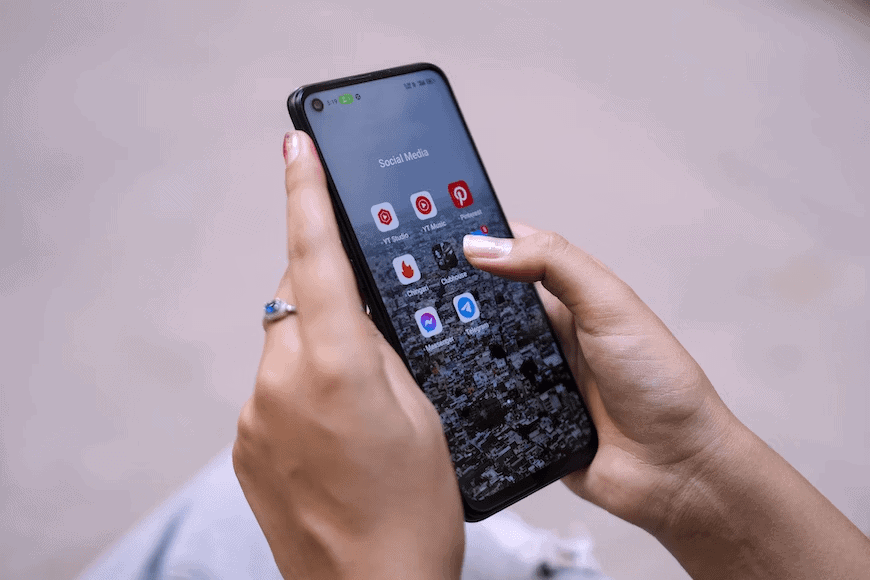Have you ever wondered what goes into creating an effective social media messaging strategy?
With so many companies tweeting, posting, and commenting away to engage their audiences, it pays (literally) to know how to message your target audience successfully on multiple social platforms.
But it isn’t as straightforward as doing whatever you think will resonate with the audience. The trick is to showcase your brand identity while also delivering value by getting to know the target audience’s needs and wants. Moreover, it’s important to use media that is popular on specific platforms (like carousels on LinkedIn and vertical videos on Instagram Reels).
Once this is complete, it’s worth analyzing the results of each social media strategy and campaign using tools such as each platform’s built-in analytics and insights tools for strategic improvement.
Join me as we explore the key aspects of each of these four secrets to successful social media messaging so you can perfect your social media messaging strategy.

Free to use image sourced from Pexels
- Showcase Your Brand Identity
Use an On-Brand Writing Style and Tone
Imagine your favorite brand as a person. What do they look like? How do they sound? What kind of language and tone do they use to convey emotions?
These are the kinds of questions companies ask themselves to determine how to convey their brand identity to improve social media campaigns.
Brand storytelling and social media messaging are closely connected because of one simple fact: social platforms allow companies to embody their brand personas.
These days, companies can choose between various types of media, writing styles, and tones to tailor their messages to audiences on social media platforms. Customer reactions and sentiments to these choices can also be analyzed for insights through powerful AI business call technology that harnesses the power of natural language processing and speech recognition to provide insights.
The idea is simple: if the way a company sounds on social media aligns with how they appear (based on its chosen positioning and brand elements), it’s likely to be seen as having a clear identity. This makes it easy for its target audiences to familiarize themselves with the brand.
Understand the Target Audience
The trick to successfully telling brand stories using social media messaging is to understand your target audience. Ask yourself: Where does your audience live? How much do they earn? What part does your brand play in their lifestyles and sense of self?
The answers to these questions determine what you message your audience on social media and how you shape the way the audience can get in touch with you.
Here’s an example to illustrate.
Suppose you’re a clothing eCommerce store that targets trendy Gen Z teenagers who love counterculture and consuming content. You want to convey your hip and bubbly brand persona through social media to strengthen your brand identity and give the audience a highly customized contact experience.
In this scenario, setting up a customized PBX system with quirky call-forwarding and voicemail recording messages will prove popular because of how closely they appeal to the audience on a personal level.
Put simply, effective social media messaging strategies appeal to the target audience’s traits using tailored messaging that stays true to the brand and is consistently posted across multiple platforms.

Free to use image sourced from Pexels
- Always Deliver Value
Value creation is a core aspect of successful social media messaging. Value makes target audiences pay attention, engage, and act after encountering a message on social media—so it’s worth paying attention to what kind of content your target audience considers to be valuable.
There are two key aspects to this: understand your target audience’s needs and link your content to a mutually beneficial call to action.
Analyzing the Target Audience’s Needs
If you want to deliver value to someone, it’s vital to know what they need. This is why we recommend analyzing your target audience’s unique needs. This will allow you to personalize your social media messaging and provide solutions and insights to genuinely improve your target audience’s lives.
Whether you’re curating content from other pages or generating your own, keep the audience’s best interests in mind and the popularity of your social media messaging will skyrocket.
Providing Value Through the Call to Action
Another great way to deliver value via social media messaging is by linking the call to action in each message with the content provided.
As the name suggests, a call to action asks the audience to act in some way (like subscribing to a newsletter or buying a product). If that act can improve your revenue while genuinely benefiting the customer, you’ve got yourself a winning strategy.
For example, suppose you run a cybersecurity firm and you want to release an infographic on how companies can benefit from data encryption.
If you include a CTA with the infographic that asks the target audience to call your team for a free demo, the post will gain traction for the immediate value you provide.
All you’ve got to do is set up an easy way for your audience to call you like a cloud-based PBX and you’ll get click-throughs in no time.
The resulting customer engagement in this scenario will increase views of your other posts as well, seeing as they’re on the same profile. If those posts also have CTAs that drive revenue and deliver value to the audience simultaneously, your social media messaging strategy is likely to succeed.

Free to use image sourced from Pexels
Leverage Platform-Specific Media
Have you noticed a ton of carousels on your company’s LinkedIn feed? This is because carousels allow users to create easily digestible bites of information.
The beauty of using a carousel on LinkedIn lies in the fact that users can enhance how they convey their message using strong visual content and platform-specific formatting. This allows them to encourage interaction and foster a lasting bond with the audience.
The same principle applies to all other social platforms—if you use the right visuals and formatting to encourage interaction, your social media messaging strategy will likely be successful.
Use On-Brand Visual Content
Visual content has an exceptionally strong chance of strengthening customer relationships on social media because it captures the target audience’s attention while conveying meaning and emotions effectively.
Visual content is also more memorable and shareable. For instance, if you own a food truck, posting stunning images and videos of your mouth-watering food on YouTube and Instagram is likely to entice your audience to pay you a visit.
These platforms champion visual content, which means you’re likely to see engagement and traffic to your social media pages increase. But before you start listing out the best kinds of visual content to release on social media, think about your brand.
Visual content can’t be striking for the sake of it—you need to stay on brand. If you release content that differs from elements like your logo design, color theme, and brand font, you’ll risk eroding your brand identity.
On the other hand, if you release high-quality and relevant visuals that match your brand’s message, you’ll strengthen your brand identity and drive sales by attracting followers and magnifying engagement.

Free to use image sourced from Unsplash
Format Your Message According to the Platform
Another tip for using platform-specific media effectively is message formatting. Different social media channels have different strengths and limitations—like Twitter with its 280-character limit for regular users and TikTok with its preference for vertical video.
It’s important to consider these formats when creating social media messages because it’ll determine how receptive your audience is to them once they’re released. It’s also worth experimenting to see what kind of format yields the most engagement on each social platform.
If you want to take things to the next level, you can also complement this strategy by using Discord webhook API. For instance, if you’re posting infographics before boosting them via Facebook Ads, you could post a ‘learn more’ button that redirects visitors to your Discord channel where you can engage with them in a richer and more media-heavy way.
Encourage Interaction
Social media is a two-way communication channel, where you can interact with your audience and build relationships with them. You can ask questions, solicit feedback, respond to comments, and join relevant conversations.
You can also show appreciation and recognition for your followers and customers by liking, sharing, or reposting their content, or by featuring them in your stories or posts. By engaging with your audience and encouraging interaction, you can increase their trust and loyalty, as well as generate word-of-mouth referrals.
Utilizing canned response examples can also enhance your social media messaging strategy. Canned responses are pre-written, standardized messages that can be used to quickly respond to common customer inquiries, comments, or feedback. These responses ensure consistency in communication and save time for your team.

Free to use image sourced from Pixabay
Perform Data Analysis
Data analysis is a fundamental part of social media messaging because it helps with strategy optimization. The idea is to collect and interpret information from various sources linked to social media to gain insights for improvement.
Analyzing Data from Calls Routed Through Social Media
One of the best ways to use data analysis for social media strategy formulation is by looking at call data.
For example, if you link your social media messages to a VoIP phone number, you can collect data on the times customers like to call, how long the calls last, and what sort of prompts during the call earned the most positive responses and engagement.
This data can be used to personalize everything from the way messages are phrased to the brand tone of voice conveyed on social media channels.
Analyzing Hashtag and Keyword Metrics
Another angle to use when analyzing social media messaging data is by monitoring hashtag and keyword performance. This refers to words and phrases that describe or categorize your messages.
Hashtags and keywords help businesses to increase reach and visibility by making their messages more searchable and relevant to the target audience. They also help companies to measure messaging performance using data on the number of impressions, views, clicks, and more.
We recommend researching popular or trending hashtags and keywords that relate to your message and target audience. This will help your posts reach people who are interested in your offering and drive engagement.
It’s also worth using the same strategy to maximize traffic and visibility for your website. For instance, if you export goods from the US to Malta, setting up a registration Malta through a .mt domain name and adding localized keywords will drive relevant traffic to your website.
Testing and Optimizing Using Data-Driven Insights
Measuring and analyzing data after trialing various social media messaging strategies is a great way to dial in what works. If you’re keen to test strategies, consider using AI solutions and social listening tools to keep an eye on metrics such as impressions, clicks, shares, and comments to evaluate the effectiveness of your messages.
By analyzing data to optimize your strategy, you can identify what type of message generates more engagement, which platform reaches more people, which format attracts more attention, and which messaging times yield the most responses.
This information you can gain from these AI tools is critical to refine social media messages so they resonate with your audience and help you achieve your business goals.

Free to use image sourced from Unsplash
Leveraging Social Media Messaging
Successful social media messaging often thrusts small and relatively unknown brands into the proverbial limelight. Whether or not you emulate this successfully depends on how closely you follow the four best practices outlined in this guide.
This means showcasing your brand using a tone of voice and writing style that exemplifies the company’s identity while also demonstrating a solid understanding of the target audience’s needs and wants.
It also means delivering value through methods like adding calls to action that the audience finds helpful, encouraging interaction between customers and your company for positive word of mouth, and utilizing platform-specific media to deliver content in optimized ways.
Balancing these aspects of social media messaging takes patience, so we recommend starting small and simply focusing on your brand tone of voice. Once that has been nailed, explore ways of delivering value before gradually analyzing data for improvements to perfect your company’s strategy and you’ll be creating impactful messages that stand out from your competitors in no time.

